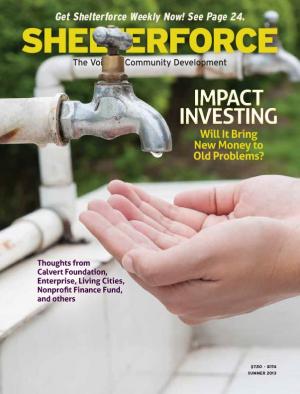Domestic social impact investment is stuck. Each year a few deals trickle through, but despite the potential and promise, impact investments in the United States are rare, complex, and entirely one-off. To be sure, there are structural challenges to growing the market in the United States—just look at Tracy Palandjian’s recent article on the state of the social impact bond sector—but I can’t help feeling that we’re suffering as much from a failure of imagination as infrastructure.
The problem is, few social entrepreneurs can clearly describe their impact capital needs, while few potential investors understand how to place impact capital into deals. I mean, if neither side really knows how to go about its business, how can we expect them to do business with each other?
But I have an idea . . .
Why we don’t take a page from the tech sector and spend a year convening meetup style with those seeking social impact capital—those nonprofits and social innovators with double bottom-line concepts who are trying to move from the drawing board to the credit committee? We can use the power of peer review to test their ideas, sharpen their presentations, and identify the strongest ideas to showcase.
We can also use our meetup presenters as guinea pigs to train their social entrepreneur peers. Wouldn’t it be good to see someone talk through the business plans and stages of capital they need? Change capital to develop the business plan! Recoverable grants or program related investments to launch the effort! Credit-enhanced commercial capital once the program has reached breakeven and now seeks resources to grow!
Then we can convene another round of the Social Impact Investment Conference and use the most competitive ideas from our meetup “roundup” to act as case studies throughout the day. That way we give our potential investors exposure to some probable deals—helping to ground their thinking of what their resources can do. The expectation is not so much that this culminating conference would be like a gathering of angel investors. On the contrary, the goal is to help educate both capital seekers and providers with some hands-on, down and dirty, in-the-weeds examination of what it takes to get a domestic social impact investment done.
As a friend of mine likes to say, we need for folks to show their underwear. Because these transactions are rare, complex, and entirely one-off, we need to look more deeply at the few examples we can find so that we all get better at spotting the opportunities.





Comments